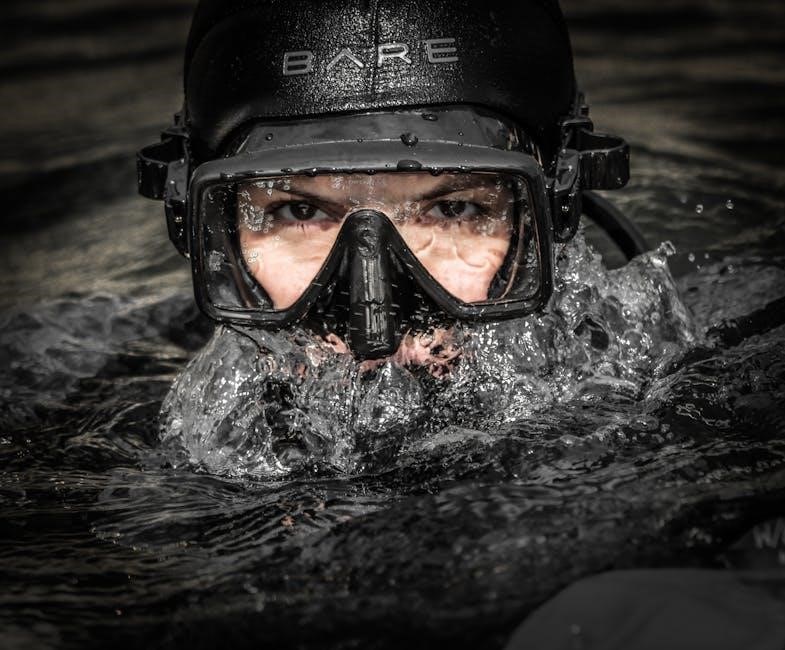unit 1 test study guide geometry basics answer key
Category : Guide
Geometry basics form the foundation of spatial understanding, covering points, lines, planes, segment addition, midpoints, distance, and angles. Mastering these concepts is key to excelling in geometry.
Key Concepts
Key concepts include points, lines, planes, segment addition, midpoints, distance, and angles. Understanding these elements is crucial for solving problems and excelling in geometry basics.
2.1 Points
A point in geometry is a fundamental concept representing a specific location in space. It has no dimension—no length, width, or height—and is simply a precise position. Points are typically named using capital letters, such as point A or point Z, and are used to define other geometric figures like lines and planes.
Points are essential for constructing and analyzing geometric shapes. For example, two points can define a line, while three non-collinear points can define a plane. In the study guide, questions often ask for the identification of points collinear to a given point, such as point K, or the naming of points in a diagram.
Understanding points is crucial as they form the building blocks of geometry. They are used in segment addition, midpoint calculations, and distance formulas. For instance, the midpoint formula requires two points to determine the exact center between them. Practice problems often involve identifying points on a diagram or using them to solve real-world spatial problems.
Mastering the concept of points ensures a strong foundation for more complex topics in geometry, such as angles and planes. Regular practice with points and their properties will enhance problem-solving skills in this unit.
2.2 Lines
In geometry, a line is a straight, one-dimensional figure that extends infinitely in both directions. It has no thickness and is defined by at least two distinct points. Lines can be named using letters or by referencing two points they pass through, such as line AB or line l.
Key properties of lines include:
- Lines are straight and extend endlessly in both directions.
- Two points determine a unique line.
- Points on the same line are collinear.
- Three non-collinear points define a plane.
Lines can also be classified into types, such as parallel, intersecting, or skew lines. Parallel lines never meet, while intersecting lines cross at a single point. Skew lines, however, are not parallel and do not intersect, existing in different planes. Understanding lines is fundamental for analyzing more complex geometric concepts.
2.3 Planes
A plane is a flat, two-dimensional surface that extends infinitely in all directions. It can be defined by three non-collinear points or by a line and a point not on the line. Planes are often represented using uppercase letters, such as plane A or plane B. In geometry, understanding planes is crucial for analyzing spatial relationships and solving problems involving three-dimensional shapes. A key concept is that two distinct planes can either intersect along a line or be parallel, never meeting. For example, in the study guide, questions often involve identifying the intersection of a line and a plane or determining the name of a plane based on given points. Properly naming planes, such as plane BDC or plane GCD, ensures clarity in geometric analysis. Mastery of plane properties is essential for progressing in geometry, as they form the basis for more complex concepts like solids and surfaces.
2.4 Segment Addition
Segment addition is a fundamental concept in geometry that involves adding the lengths of two segments to find the length of a third segment. This principle is essential for solving problems involving distances and lengths in geometric figures. The basic idea is that if two segments, such as PQ and QR, are collinear and share a common endpoint Q, the total length of the segment PR can be found by adding the lengths of PQ and QR. Mathematically, this is expressed as:
PQ + QR = PR
This concept is widely used in various geometric applications, including calculating distances between points, solving for unknown segment lengths, and verifying the consistency of measurements in diagrams. Understanding segment addition is crucial for progressing in geometry, as it forms the basis for more complex concepts like midpoint calculations and distance formulas.
For example, if PQ = 5 units and QR = 3 units, then PR = 5 + 3 = 8 units. This straightforward yet powerful principle helps in breaking down complex problems into manageable parts, ensuring accuracy in geometric analysis.
2.5 Midpoint and Distance
The midpoint of a line segment is the point that divides it into two equal parts. To find the midpoint, use the formula: M = ((x₁ + x₂)/2, (y₁ + y₂)/2). For example, the midpoint of segment AB with points A(1, 2) and B(3, 4) is M(2, 3). Distance between two points is calculated using the distance formula: d = √[(x₂ – x₁)² + (y₂ – y₁)²]. For points C(4, 6) and D(7, 8), the distance is √[(7-4)² + (8-6)²] = √(9 + 4) = √13. Practice problems often involve finding midpoints and distances between given points, ensuring accuracy in calculations. Understanding these concepts is crucial for solving more complex geometry problems. Always double-check your work to avoid errors in coordinate values and formula application.
2.6 Angles
Angles are fundamental in geometry, formed by two rays sharing a common endpoint called the vertex. Understanding angles is crucial for solving problems involving measurement, triangles, and polygons. Acute angles are less than 90 degrees, while obtuse angles are greater than 90 but less than 180 degrees. Right angles measure exactly 90 degrees, and straight angles are 180 degrees. Supplementary angles add up to 180 degrees, and complementary angles sum to 90 degrees. The Triangle Angle Sum Theorem states that the sum of angles in a triangle is 180 degrees. When two lines intersect, vertical angles are equal, and adjacent angles form a linear pair, adding up to 180 degrees. Measuring angles accurately is essential for constructing shapes and solving real-world problems. Practice identifying and calculating angles using protractors and geometric properties to master this concept.
Tips for Success on the Unit 1 Test
To excel on the Unit 1 test, focus on understanding key geometry concepts such as points, lines, planes, segment addition, midpoints, distance, and angles. Practice problems regularly to build familiarity with various question types. Use diagrams to visualize spatial relationships and simplify complex problems. Review study guides and answer keys to identify areas needing improvement. Time management is crucial—allocate equal attention to each section. Avoid rushing through questions; instead, approach each problem methodically. Seek clarification on any confusing topics from teachers or classmates. Lastly, review mistakes from practice tests to avoid repeating them during the actual exam. Consistent effort and thorough preparation will ensure confidence and success on test day.
Practice Problems
- Name two points collinear to point K.
- Give another name for line b.
- Name the intersection of line c and plane R.
- Determine the midpoint of segment AB.
- Calculate the distance between points M and N.
- Measure the angle formed by lines AC and BC.
4.1 Points, Lines, Planes
Understanding points, lines, and planes is fundamental in geometry. A point is a location in space, represented by a dot. Points are collinear if they lie on the same line. For example, points J, L, and M are collinear with point K. A line extends infinitely in two directions and can be named using two points it passes through, like line HK. A plane is a flat surface that extends infinitely in all directions, defined by three non-collinear points or a line and a point not on the line.
Practice identifying points, lines, and planes using diagrams. For instance, in a given diagram, name two points collinear to point K (e.g., J and L) and provide another name for line b (e.g., HK). These exercises help build spatial reasoning skills essential for geometry.
4.2 Segment Addition
Segment addition is a fundamental concept in geometry that involves adding the lengths of two or more line segments to find the total length of a combined segment. This concept is essential for solving problems involving distances and measurements in geometric figures.
To solve segment addition problems, ensure the segments are aligned correctly and measure their combined length. For example, if segment AB is 5 units and segment BC is 3 units, the length of segment AC is 8 units. This principle applies to both overlapping and end-to-end segments.
Key steps include identifying the segments involved, ensuring they are collinear, and applying the addition postulate. Practice problems often involve finding missing lengths or verifying the correctness of given measurements. Mastering segment addition enhances your ability to solve more complex geometry problems.
4.3 Midpoint and Distance
The midpoint of a segment is the point that divides it into two equal parts. To find the midpoint, use the formula: M = ((x₁ + x₂)/2, (y₁ + y₂)/2). For example, the midpoint of segment AB with endpoints A(1, 2) and B(3, 4) is M(2, 3).
The distance between two points measures the length of the segment connecting them. Use the distance formula: d = √[(x₂ – x₁)² + (y₂ – y₁)²]. For points A(0, 0) and B(4, 3), the distance is √[(4-0)² + (3-0)²] = 5 units.
Practice problems often involve applying these formulas to real-world scenarios. For instance, finding the midpoint of a diagonal in a rectangle or calculating the distance between two cities on a map. Ensure accuracy by carefully substituting coordinates into the formulas and simplifying step-by-step.
Common mistakes include incorrect substitution of coordinates or miscalculations during squaring or square rooting. Double-checking work helps avoid errors and builds confidence in problem-solving skills.
4.4 Angles
Practice problems on angles help reinforce understanding of basic geometry concepts. Identify and measure angles using degrees, and classify them as acute, right, obtuse, or straight. Use the diagram to answer:
- Name the angle with vertex at point A: Angle BAC.
- Measure angle ECH if it is perpendicular to another angle: 90 degrees.
- Determine the measure of angle WXY if it is supplementary to a 47-degree angle: 133 degrees.
- Identify the type of angle that measures 58 degrees: Acute angle.
- Find the missing angle in a triangle where two angles are 45 degrees and 90 degrees: 45 degrees.
These exercises ensure mastery of angle classification, measurement, and properties.
Answer Key
The answer key provides solutions to practice problems, covering points, lines, planes, segment addition, midpoints, distance, and angles. Each section offers clear, concise answers to help students verify their understanding and improve accuracy.
5.1 Points, Lines, Planes
Here are the answers to the practice problems on points, lines, and planes:
- 1.A – Points M and H are collinear with point K.
- 1.B – Another name for line b is line HK.
- 1.C – The intersection of line c and plane R is point Z.
- 1.D – Points A, B, and C are non-collinear.
- 1.E – Ray JK is another name for ray KJ.
- 1.F – Line lAC is another name for line AC.
- 1.G – Points A, B, and C lie on plane BDC.
- 1.H – Ray BA and ray BC form angle ABC.
- 1.I – Point A is the vertex of angle BAC.
- 1.J – Plane GCD is another name for plane BDC.
These answers align with the concepts covered in the study guide, ensuring a strong understanding of points, lines, and planes in geometry.
5.2 Segment Addition
Segment addition involves combining two or more line segments to form a new segment. This concept is fundamental in geometry for understanding length and distance. To add segments, align them end-to-end without overlapping. For example, if segment AB is 5 units and segment BC is 3 units, the total length of segment AC is 8 units. This principle is essential for solving problems involving distances in various geometric figures.
The midpoint of a segment is the point that divides it into two equal parts. To find the midpoint, use the midpoint formula: M = ((x₁ + x₂)/2, (y₁ + y₂)/2). For instance, the midpoint of segment AB with endpoints A(2, 4) and B(6, 8) is M(4, 6). This concept is crucial for calculating distances and understanding symmetry in geometry.
Practice problems often involve applying these concepts to real-world scenarios, such as finding the total length of a path or determining the center of a line segment. Mastering segment addition and midpoint calculation is vital for success in geometry.
5.3 Midpoint and Distance
The midpoint of a segment is the point that divides it into two equal parts. To find the midpoint, use the formula:
M = ((x₁ + x₂)/2, (y₁ + y₂)/2). For example, the midpoint of segment AB with endpoints A(2, 4) and B(6, 8) is M(4, 6).
Distance between two points measures the length of the segment connecting them. The distance formula is:
d = √[(x₂ – x₁)² + (y₂ – y₁)²]. For points C(1, 3) and D(4, 7), the distance is √[(4-1)² + (7-3)²] = √(9 + 16) = √25 = 5 units.
Understanding midpoints and distances is crucial for solving problems involving segments and coordinates. Practice these concepts to improve your geometry skills. Always double-check your calculations to ensure accuracy. These formulas are essential for more advanced topics in geometry and beyond. Mastering them will help you tackle complex problems with confidence. Keep practicing to solidify your understanding of midpoints and distances. Geometry relies heavily on these foundational concepts, so they are vital to your success in this unit and future studies.
5.4 Angles
Angles are a fundamental concept in geometry, measured in degrees and formed by two rays sharing a common endpoint. Acute angles are less than 90°, obtuse angles are between 90° and 180°, right angles are exactly 90°, and straight angles are 180°. Complementary angles sum to 90°, while supplementary angles sum to 180°. To find missing angles in a triangle, use the fact that the sum of interior angles is 180°. For example, if two angles are 50° and 60°, the third angle is 70°. Angle relationships, such as vertical angles (equal angles opposite each other) and linear pairs (adjacent angles forming a straight line), are crucial for solving problems. Practice identifying and calculating angles in various configurations to master this topic. Real-world applications, like construction and design, rely heavily on understanding angles, making this a vital skill for future success.





























